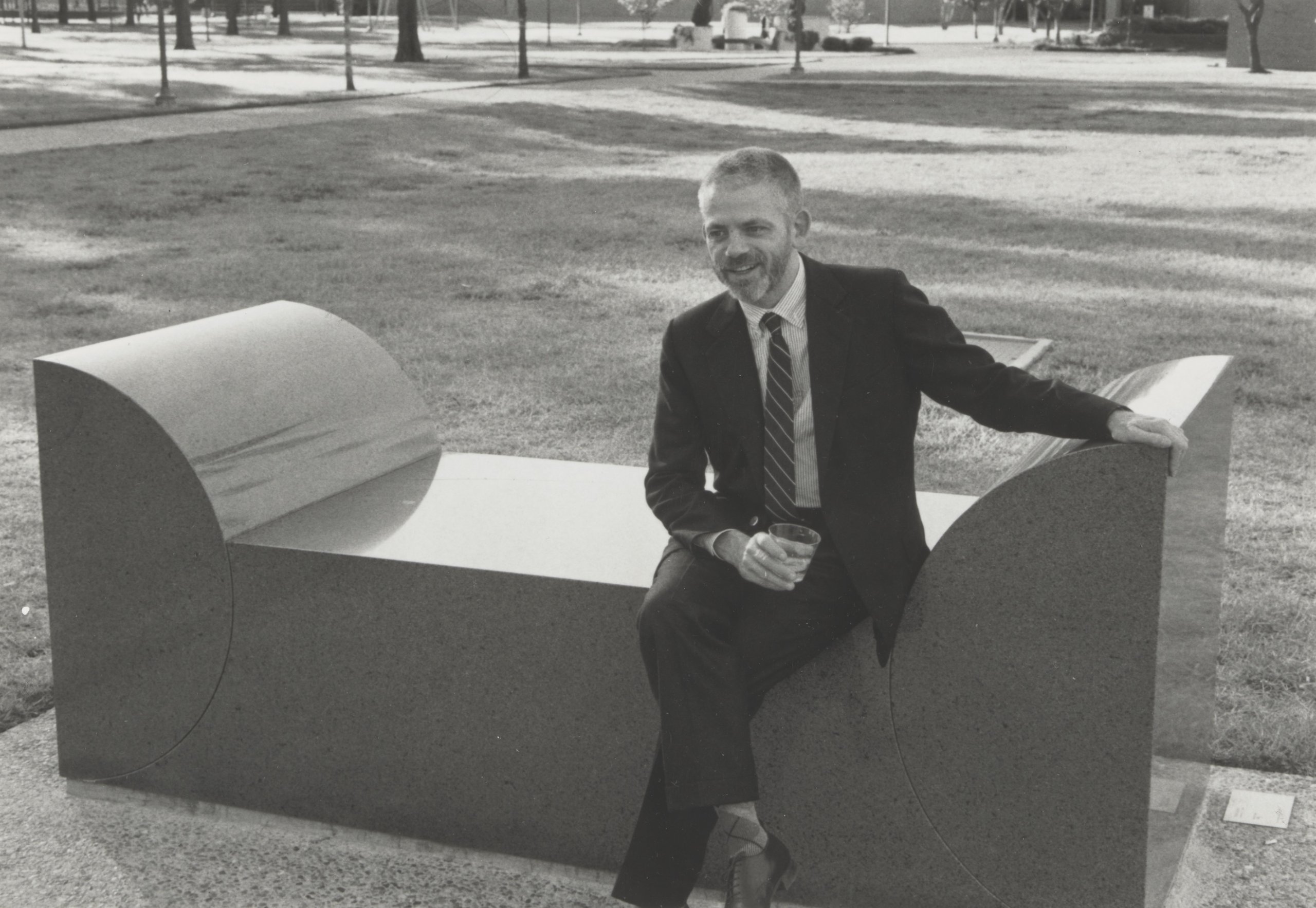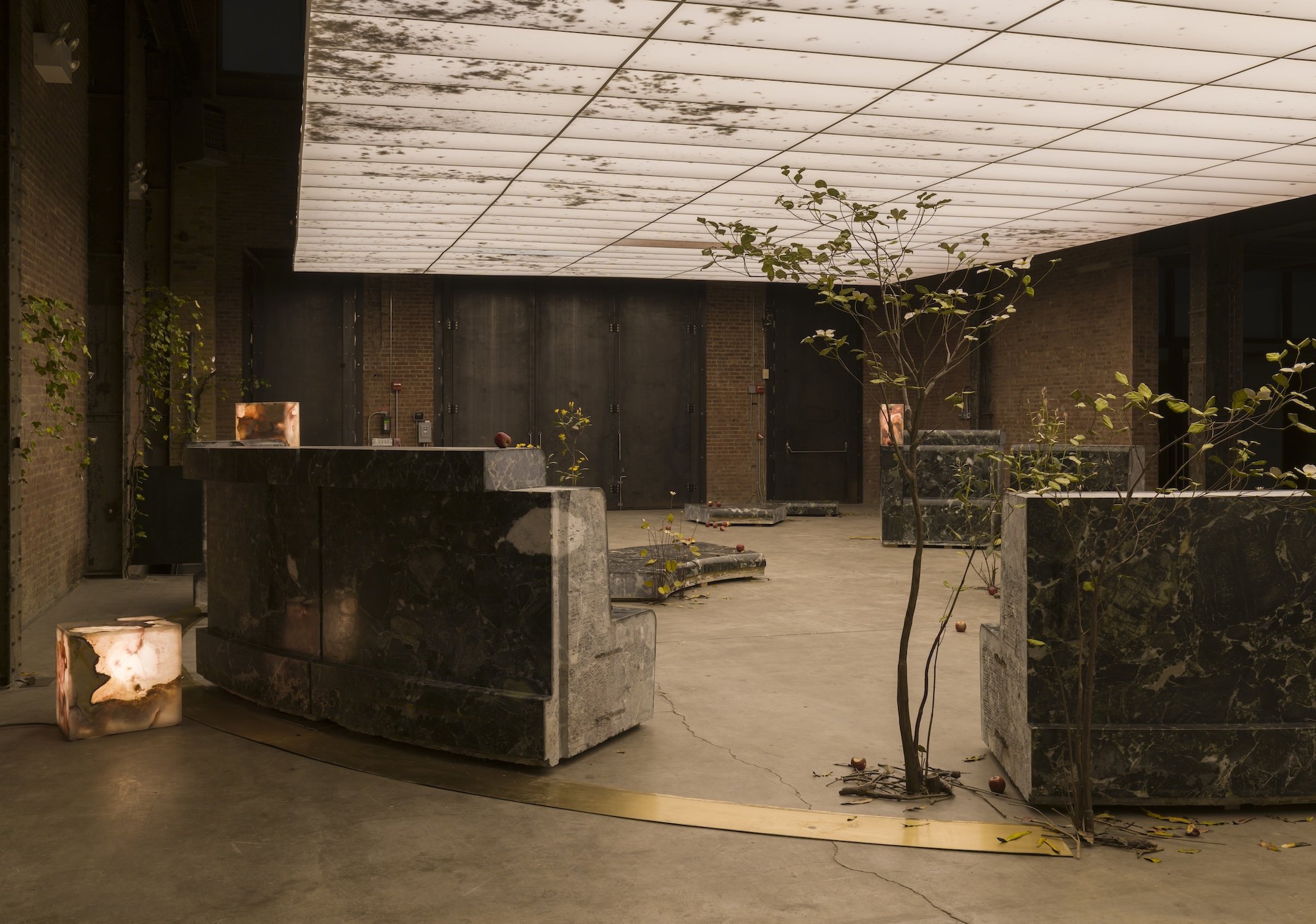
At the peak of his fame, in the mid-1980s, artist Scott Burton often spoke of functional design and its value through the perspective of future archaeologists and anthropologists. “What matters is how intensely it reflects the history of its moment, how much it reveals of what history is about at that time,” he explained.
A performance artist, furniture designer, and art critic in the 1970s, Burton’s visibility increased greatly in the following decade. Throughout the ’80s he created sculptural furniture for plazas, parks, and lobbies across the United States until 1989, when he died from AIDS-related causes at the age of 50.
Not quite 40 years since his death, Burton’s works have fallen into relative obscurity while their functional and aesthetic durability has allowed passersby to take them for granted. A lack of fanfare and advocacy, meanwhile, has perhaps been interpreted by those in charge of their care as permission to move on from them.
What a shame it would be if those future researchers Burton thought of—or anyone else—never got the chance to enjoy his benches, settees, and chairs. Worse yet, what a shame it would be if the conditions of our own times could neither preserve Burton’s works nor embrace their ideals around visual clarity, public access, and personal comfort.
During the summer of 2020, owners of 787 Seventh Avenue, previously known as Manhattan’s Equitable Center, decided to remove an elaborate atrium installation in a privately owned public space original to the building’s 1986 completion. Arguably Burton’s best and most elaborate installation, it featured polished green marble, onyx lighting fixtures, evergreen trees, and a round pond with papyrus and reeds “growing right out of the furniture,” as the artist once described it. A 40-foot, semicircular stone settee was set just low enough to make sure people knew it should be used as a bench while allowing users to orient themselves either toward the streetscape or the indoor plant life.
Perhaps time is starting to turn on his work. Burton’s installation in the Brooklyn neighborhood of Sheepshead Bay, consisting of lighting fixtures, perforated steel benches, and travertine ottomans along nine piers, was removed in 2022 after extensive weather damage. At Battery Park City, elements of his granite benches—done in collaboration with sculptor Siah Armajani, landscape architect M. Paul Friedberg, and architect César Pelli—are scheduled to be removed next year. On the other end of the state, his dual benches for a metro rail station in Buffalo, designed as an homage to the Arts and Crafts movement, which had once flourished nearby, were relocated to make way for above-ground development.
Compared to today, when “lighter, quicker, cheaper” solutions are deployed for highly visible gathering spaces to save money and avoid controversy, Burton’s heavy, deliberate, and costly pieces with the same goals of sociability and relief seem otherworldly and self-assured. And, as we endure the current trend of bleacher steps as the go-to lobby amenity, the intimate and defined structure of Burton’s seating feels especially dignified.
Burton’s creations came out of a perceived hostility between art and architecture at the time, and a belief that public art must contain a social function, as opposed to being merely plopped down. In contributing to spaces by contemporary architects such as Pelli, I.M. Pei, Philip Johnson, and Edward Larrabee Barnes, Burton felt “a certain schizophrenia” balancing the role of artist and designer, as he wrote in a 1983 essay for Design Quarterly.
Eager to take his art out of the galleries and onto the streets, he spent the last decade of his life sacrificing the pure solitude of an artist in order to successfully collaborate with the various teams behind each public or semipublic space. It was worth it in order to, as he wrote, “bring a new fervor of imagination to our quite stagnant conception of public amenity.”

The artist, a gay man, came of age living in 1970s New York, where depressed real estate values and diminished public services created opportunities for subcultures to emerge and flourish. His performance art pieces, which drew from body language and physical cues from urban queer culture, were dropped in the following decade as he pivoted to public art.
This was the decade of cities being “fun” again, as Time magazine proclaimed on an August 1981 cover featuring the developer behind the redevelopment of New York’s South Street Seaport and Baltimore’s Harborplace. Mainstream Americans were ready to rediscover their downtowns, and Burton was eager to give them somewhere to sit.
In one of Burton’s performance works, he arranged a pair of chairs close to each other while leaving a third chair far away but still turned towards them—a visual of belonging and not belonging. Such contemplations can be felt at Baltimore’s Pearlstone Park, where one finds cross-shaped concrete benches by Burton that can accommodate one person on the north and south ends, two on the east and west ends. All four sides provide back support and a little privacy by the same concrete core. The arrangement accommodates solitude and companionship all at once.
Each grouping of seats is broken up by lighting fixtures, also designed by Burton, along a slightly curved pathway connecting a light rail station to cultural and higher-ed institutions. A more hectic version of this dynamic can be seen at Burton’s outdoor installation for Manhattan’s Equitable Center, where granite benches facing different directions accommodate between one and four people along the north plaza.
Its south plaza, with its scattering of compact tables and stools made of granite and designed as inverted cones placed into cylinders, invites an ever-evolving mix of people who want to use their phones, have lunch or a coffee, gossip, or do nothing at all. Burton’s installations consistently present themselves as deliberate, unmovable, and intertwined with the buildings they support. All for the sake of supporting the fleeting urges and modest plans of anyone who comes across them.

Much of Burton’s work remains intact, and there are new reasons to believe his legacy is in good hands. At Long Island City’s SculptureCenter, artist Álvaro Urbano has rearranged original elements of Burton’s atrium installation for the Equitable Center. And at St. Louis’s Pulitzer Arts Center, Burton’s first retrospective since his death celebrates his interest in furniture from his very first sculpture, in which he cast a found household chair in bronze and set it outside, to his last work, a prototype intended for therapeutic purposes and requiring perfect posture in order for the user to stay on it.
Long fascinated by the Adirondack chair, Burton’s homages to the widely popular design include one in aluminum with perforations and elongated back legs, and an armless version composed of wooden slats appearing as two intermeshed triangles. There is no lack of plastic laminate Adirondacks to be found around today’s parks, beer gardens, and makeshift outdoor gathering spaces—and with good reason. They sure are comfortable. (You can even buy one for $50 on Temu, if you dare.)
Burton put his art bona fides to use on a self-imposed challenge of making functional art, and not just for patrons who’d collect settees like they would paintings. Insisting that public art make itself useful, he provided pockets of egalitarian comfort that can—still more often than not—sustain storms, recessions, and trends. When future archaeologists and anthropologists discover his seating, they’ll find generosity, creativity, and aspiration. For now, they’re still ours to enjoy.